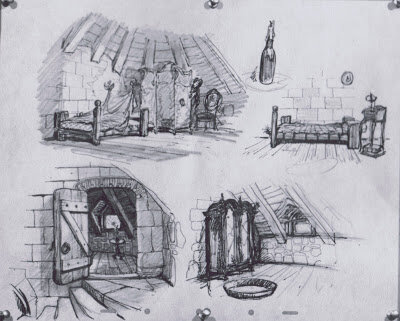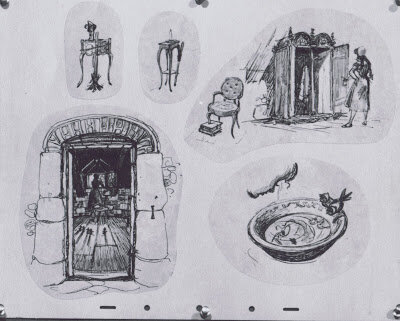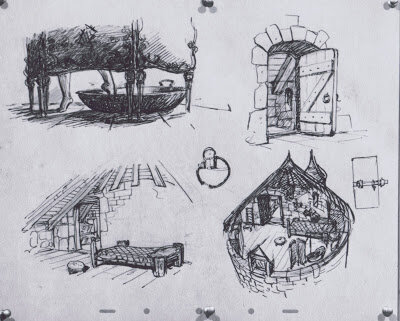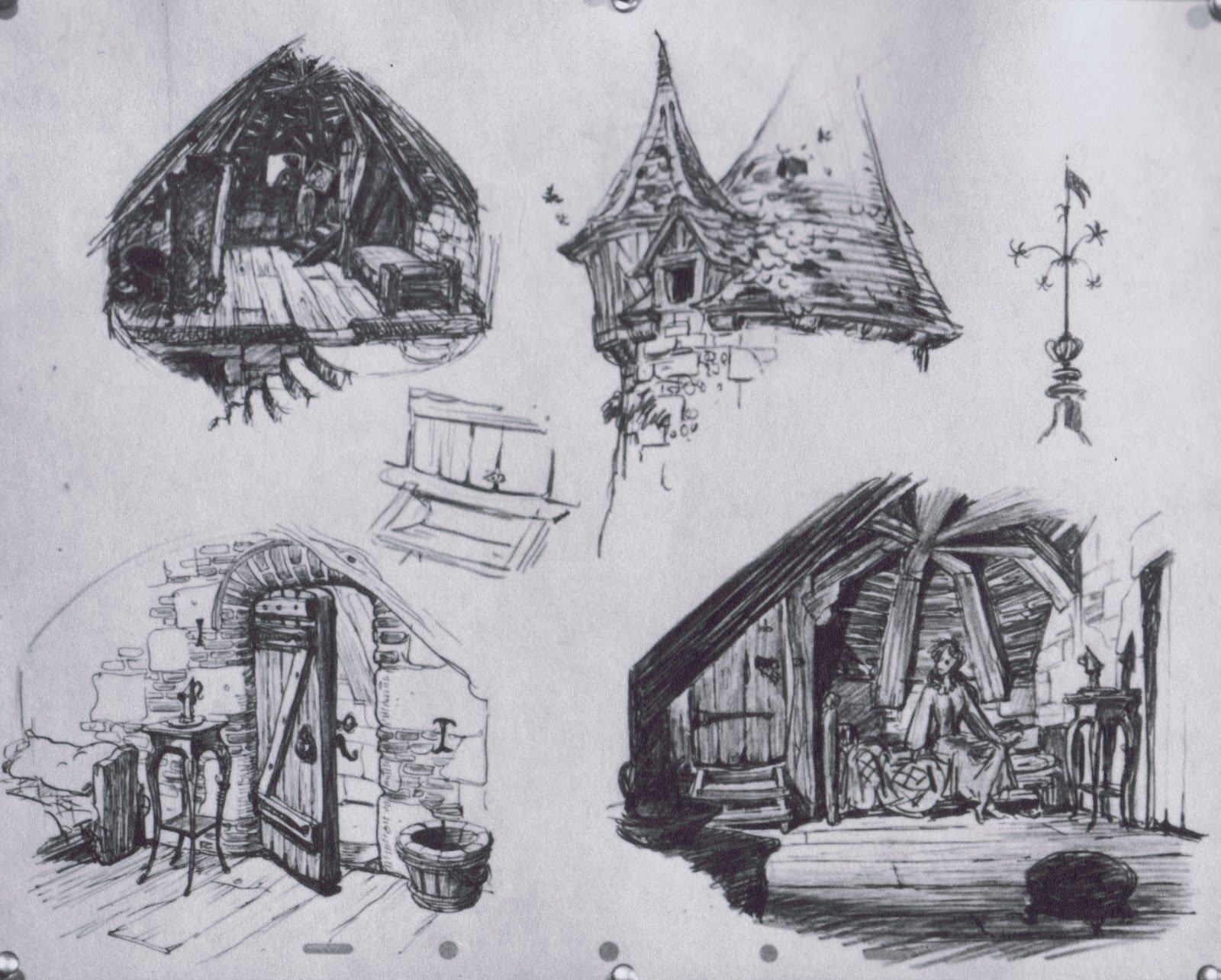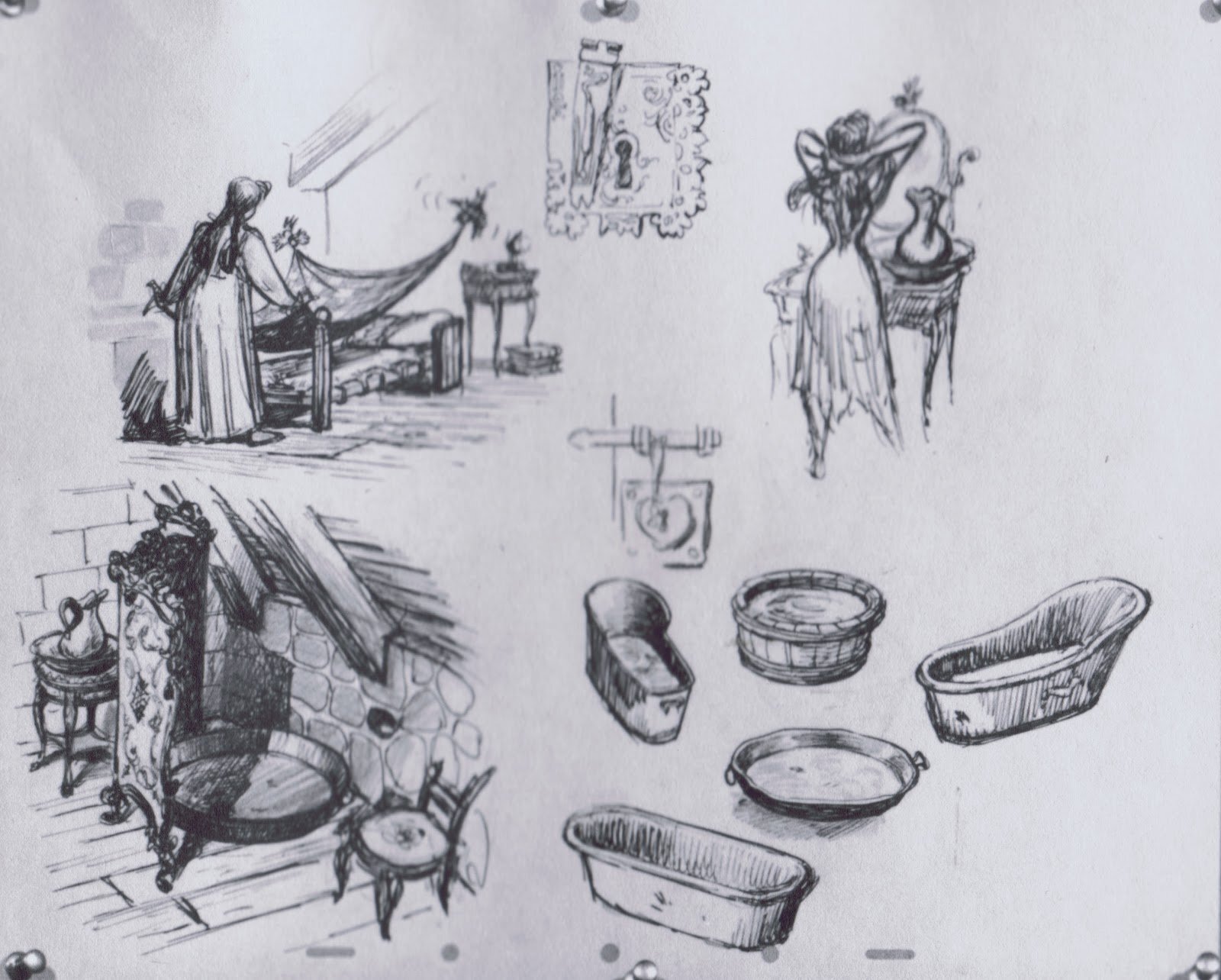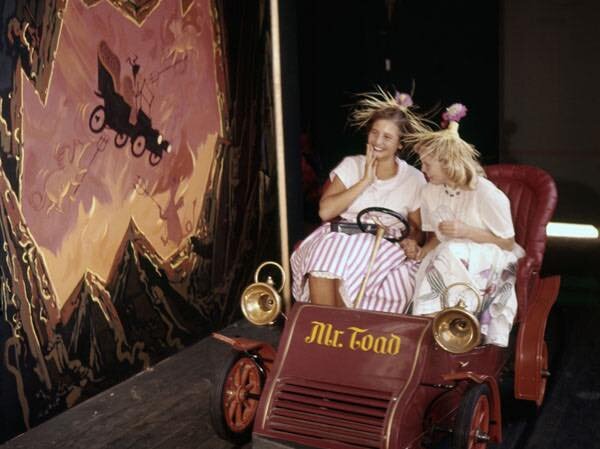Ken Anderson's Scary Contributions to Disneyland
Hello hello, friends!
Today we are diving into something a little different for Halloween at the Disney parks. The somewhat obvious route is to discuss the Haunted Mansion since it is the most central place for ghosts and ghoulies. We wanted to take a different direction. So this year we are covering the contributions made by an animator and one of the first imagineers--Ken Anderson.
His main contributions to the park centered around the Haunted Mansion and the Fantasyland dark rides which were soon known to have a slight fear factor to them. With all of these achievements under his belt, he is still highly underappreciated in my opinion. So, let’s dig into these stories to tell you the truth of Ken Anderson and the spooky rides he originated with the opening of Disneyland.
The Backstory
Welcome back, guys! As we get started here, be sure to hit that subscribe button to see more videos on Disney history like this. Now, if you are somewhat new to Disney history, you may not know who Ken Anderson even is. Let's rewind just a tad and give you that backstory so you know!
Perhaps you've heard of the nine old men of Disney animation... Well, Ken Anderson was essentially the 10th old man in the group. The term was coined very quickly and offhandedly and kind of left out this key animator.
He had a classical background in architecture and also grew up with an innate loving of drawing and art. Here’s how he tells the story of getting his job at Disney. He got the job and over time, he progressed as a leader in animation and story directing--working on Silly Symphonies and eventually Ferdinand the Bull where he introduced bold color to Disney animation, something everyone thought Walt would dislike greatly. But it ended up being a huge step in animation for them. He went on to have an integral role in the art direction of Snow White, where, by the way, he introduced the gag of Dopey wiggling his ears based on Ken’s own ability. He also did work on Fantasia and Cinderella, art direction the larger backgrounds and moods to fit the film.
Later, he integrated the use of the Xerox process which defined the style of an era of Disney films' starting with 101 Dalmatians and continuing through Sword in the Stone, Robin Hood, and more. Walt Disney eventually called Ken his "jack of all trades" since he had such talent in so many areas of their business. He was known for having a very serious take on his work, as he often thought many of the scenes he worked on should be darker or badder. He often used the terms “believeable,” “gutsy,” and “not namby-pamby” as he called it, to describe what he desired in his stories and characters. On the other hand though, he wasn’t afraid to have a laugh and some fun.
Ken Anderson was also one of the very first people whom Walt Disney pulled from the studio and paid personally to start development on the Mickey Mouse park which would soon become Disneyland in Anaheim. He stayed fully immersed in the projects until Walt had him pulled back a little to also work on Sleeping Beauty that was also in production back at the studio.
Ken Anderson Fantasyland Projects
Ken was initially assigned work on a haunted house attraction as well as the rides set for Fantasyland--particularly Peter Pan's Flight, Mr. Toad's Wild Ride, and Snow White and Her Adventures. Constructing Disneyland in those days didn't have people in offices, but rather in warehouses and at the actual location of the ride to design, construct, and paint the sets. Each of the creations were vastly a result of teamwork and collaboration, though Ken Anderson did do quite a bit on these three.
Now, as we get into looking at each of these rides, I do want to mention that the concept of Disneyland was largely new for the time. Typically, amusements parks were expected to be a little dirty, and dark rides were known to be a cramped and often frightening. Of course, there were a few rare exceptions to the "dirty amusement park" collective understanding. And Disney took note of those parks! But it wasn't the norm and as we are looking at how these rides were developed, we have to remember that many of the designers, Ken included, were creating something original based on what they knew and had experienced previously.
When Disney put Claude and Ken on the projects, the projects had been falling behind and probably weren’t going to open in time. So, Walt went to these two set designers and said, “You’re going to do it!” The guidance they got from Disney was to create three rides based on three, different characteristics—drama, humor, and beauty.
Peter Pan took the wonder category, which is partially why we won’t be touching on that one here. Snow White and Her Adventures got the drama, and Mr. Toad the humor.
Mr. Toad’s Wild Ride
Jumping right into this, we are first taking a look into Mr. Toad’s Wild Ride—the humorous one. And for the most part it was just that.
Claude Coats had begun on this one and finished much of the foundation of the ride. When Ken got involved, he worked on fleshing it out and adding more visualization to bring guests into the story more. They also had to rework the entire layout of the track since the sketches and dimensions they had did not fit what was actually built at the park’s site. Together, they worked on painting the scenes, the beautiful murals in the loading area, and making sure everything was blacklit appropriately.
Now, this attraction truly is a fun jaunt through the film and its stories as it fit Walt’s request for a humorous dark ride. Yes, Mr. Toad isn’t the most upstanding citizen and he does have a chase to get away from the law, but many people enjoyed this ride and found it quite entertaining. That is until the end…
After careening through the scenes of the story, avoiding the law, and going to court, Mr. Toad (who is technically you in this) gets sent to the ultimate judgement…in hell. Yep. There’s a whole scene set right in hell with the judge depicted as the devil and several surrounding demons that honestly kind of look like red Figments. Interestingly enough, Ken had plans for the ride to take guests through hell but then have a form of redemption by ending the ride in heaven. Apparently though, many people did not like Disney attempting to depict Heaven in a ride…but they didn’t seem to have the same problem with hell. So, Ken threw out the heaven idea and just had the guests exit the fiery scene into Fantasyland.
By the way, I don’t know about you, but I really think the little demons look a whole lot like Figment from the Journey into Imagination ride in Epcot, but I digress. Moving on!
Snow White and Her Adventures
As I said before, Ken had previously worked on the 1937 animated film. So, he intimately knew the story.
Notice that the Snow White ride was called "Snow White and Her Adventures," leaving out the familiar "scary" description. When the ride was initially designed, much of it actually was set around the Wicked Witch. Really, it became the Evil Queen’s ride. This was because many of the dark rides were designed to put the riders in the story as the main character. In the film, Snow White has quick a few scary encounters, but this ride multiplied them in many cases--really focusing on the witch and her schemes.
Let’s take a look at the original concept for the ride just to get an idea for what they wanted.
Notice that Snow White is in this ride. We know that Walt famously stated he didn’t want the main characters within the attractions. Rather, he wanted to be sure to put the guests in the perspective of the main character, which in this case was often a scary position to be. As a result though, the idea of having Snow White in the ride was immediately scrapped.
Instead, the designers changed much of the ride to have a big portion devoted to the witch, along with a large section within a dungeon in the castle. To many of the guests, this is an irrelevant part to the movie and seems incredibly disjointed in the ride. However, what many don’t know is back when the 1937 film was being storyboarded, the prince had quite a large role in the film. The story had the evil queen kidnapping him after he refused her marriage proposal and taking him to her dungeon were there was an entire scene with him and an introduction of some skeletons—namely one called Oswald. That entire scene was obviously scrapped, but the imagineers brought back the essence of that to this Disneyland ride. This explains the extended version of the dungeon in comparison to what was shown in the film.
Now, we’ve said already that Disney wanted this ride to be a little more on the scary side. Both Ken Anderson and Claude Coats contributed to this fear factor. Ken drew up initial concepts for the mural that would span across the wall in the loading area. The central point of this mural had a whimsical and cheery mood to it. But flanking either side, you got the sense of what else would be lurking in the short, dark attraction. You can see that some of those ideas that Ken pulled from deleted sketches that had originally been created for the film.
Ken also created some concept art that would be used as publicity for the ride in the Mickey Mouse Club magazine. You can see the desired plans here as well as the blatant focus on scariness direct from his designs. As you can tell, the art for this attraction has vastly shifted from some light scenes to pretty much all dark and a bit creepy. While Claude’s influence is really seen in the cottage rooms, Ken without a doubt had a hand in creating these storylines. Again, they were really pulling on any scariness from the film, and as we’ve observed, from their scrapped original stories for this ride.
By the time of the opening for the ride, a new layout had been made. This pulled out some of those calm scenes with the dwarves walking across and fallen tree and the quaint cabin and replaced them with more bleak scenes with the witch and a longer time spent in the forest. Ken and Claude painted many of the backlight colors onto the cutouts and scenes, particularly the spooky trees in the forest scene. Ken had also made a varying color palette for the different scenes, but in some of those scenes, the painters abandoned them and chose different colors.
Overall, the essence of the ride became truly dark and creepy, often causing complaints among guests who didn’t know Snow White wouldn’t be featured and that it would be so terrifying. Eventually, Disney changed the name to Snow White’s Scary Adventures and displayed repeated hints to the attraction’s scary nature. There’s no denying that this ride was a quintessential Fantasyland one, but there is also no denying that even as the imagineers were attempting to put their guests in the tale of their popular film, they definitely took a more haunting route in the process.
Summing It All Up…
Well, friends. That covers our look at some of the spookier contributions that Ken Anderson made to the dark rides in Fantasyland. I want to reiterate that these dark rides had ties to what many people understood as a dark ride at the times. So, the imagineers didn’t necessarily want to push horror on guests, but rather went off what they knew and created something completely new and immersive into their own stories. It most certainly set Disney apart from anything guests had experienced, even if a bit terrifying here and there.
Some of you may be wondering about how we missed the obvious Anderson contribution of the Haunted Mansion, well, all we can say is…. “hurry baack”
And with that, we’ll see you on the flip flop!




